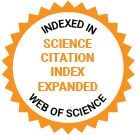Journal of Medical Internet Research
The leading peer-reviewed journal for digital medicine and health and health care in the internet age.
Editor-in-Chief:
Gunther Eysenbach, MD, MPH, FACMI, Founding Editor and Publisher; Adjunct Professor, School of Health Information Science, University of Victoria, Canada
Impact Factor 5.8 CiteScore 14.4
Recent Articles

Artificial intelligence (AI) is increasingly used in medical care, particularly in the areas of image recognition and processing. While its practical use in other areas is still limited, an understanding of patients’ needs is essential for the practical and sustainable implementation of AI, which could further acceptance of new innovations.

The integration of diverse clinical data sources requires standardization through models such as Observational Medical Outcomes Partnership (OMOP). However, mapping data elements to OMOP concepts demands significant technical expertise and time. While large health care systems often have resources for OMOP conversion, smaller clinical trials and studies frequently lack such support, leaving valuable research data siloed.

Tracking the performance of activities of daily living (ADLs) using ADL recognition has the potential to facilitate aging-in-place strategies, allowing older adults to live in their homes longer and enabling their families and caregivers to monitor changes in health status. However, the ADL recognition literature historically has evaluated systems in controlled settings with data from younger populations, creating the question of whether these systems will work in real-world conditions for older populations.

Young children often get sick, and although they usually do not need treatment, it can be distressing for parents and lead to a high rate of urgent health care use. As the demand for out-of-hours services grows, understanding parents’ concerns and needs when caring for an ill child is crucial for designing interventions that support informed health-seeking decisions.


Chronic obstructive pulmonary disease (COPD) is a common and progressive respiratory condition characterized by persistent airflow limitation and symptoms such as dyspnea, cough, and sputum production. Acute exacerbations (AE) of COPD (AE-COPD) are key determinants of disease progression; yet, existing predictive models relying mainly on spirometric measurements, such as forced expiratory volume in 1 second, reflect only a fraction of the physiological information embedded in respiratory function tests. Recent advances in artificial intelligence (AI) have enabled more sophisticated analyses of full spirometric curves, including flow-volume loops and volume-time curves, facilitating the identification of complex patterns associated with increased exacerbation risk.

Persisting sex- and gender-based disparities in access to high-quality, personalized health care in the United States can lead to devastating outcomes with long-lasting consequences. Strategic use of virtual resources could expand equitable health care access for women. However, optimal approaches and timing for individualized, virtually delivered health care for women are unclear.

Influenza viruses are major pathogens responsible for acute respiratory infections in humans, which present with symptoms such as fever, cough, sore throat, muscle pain, and fatigue. While molecular diagnostics remain the gold standard, their limited accessibility in resource-poor settings underscores the need for rapid, cost-effective alternatives. Routine blood parameters offer promising predictive value but lack integration into intelligent diagnostic systems for influenza subtyping.

The content of children’s screen exposure and interactive coviewing with caregivers are important determinants of early childhood development (ECD) that have been overlooked in past research in resource-limited rural regions. Given the prevalence of digital devices and diverse digital content today, determining screen use practices that minimize the negative impacts on children’s development is crucial for promoting healthy screen use among children.

Artificial intelligence (AI) studies show promise in enhancing accuracy and efficiency in mammographic screening programs worldwide. However, its integration into clinical workflows faces several challenges, including unintended errors, the need for professional training, and ethical concerns. Notably, specific frameworks for AI imaging in breast cancer screening are still lacking.

Patients with end-stage kidney disease undergoing dialysis face significant physical, psychological, and social challenges that impact their quality of life. Social media platforms such as X (formerly known as Twitter) have become important outlets for these patients to share experiences and exchange information.

Information overload in electronic health records requires effective solutions to alleviate clinicians’ administrative tasks. Automatically summarizing clinical text has gained significant attention with the rise of large language models. While individual studies show optimism, a structured overview of the research landscape is lacking.
Preprints Open for Peer-Review
Open Peer Review Period:
-
Open Peer Review Period:
-
Open Peer Review Period:
-
Open Peer Review Period:
-
Open Peer Review Period:
-
Open Peer Review Period:
-
















